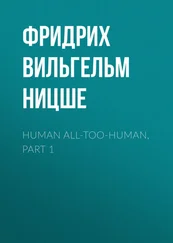Human Communication Technology
Здесь есть возможность читать онлайн «Human Communication Technology» — ознакомительный отрывок электронной книги совершенно бесплатно, а после прочтения отрывка купить полную версию. В некоторых случаях можно слушать аудио, скачать через торрент в формате fb2 и присутствует краткое содержание. Жанр: unrecognised, на английском языке. Описание произведения, (предисловие) а так же отзывы посетителей доступны на портале библиотеки ЛибКат.
- Название:Human Communication Technology
- Автор:
- Жанр:
- Год:неизвестен
- ISBN:нет данных
- Рейтинг книги:5 / 5. Голосов: 1
-
Избранное:Добавить в избранное
- Отзывы:
-
Ваша оценка:
- 100
- 1
- 2
- 3
- 4
- 5
Human Communication Technology: краткое содержание, описание и аннотация
Предлагаем к чтению аннотацию, описание, краткое содержание или предисловие (зависит от того, что написал сам автор книги «Human Communication Technology»). Если вы не нашли необходимую информацию о книге — напишите в комментариях, мы постараемся отыскать её.
A unique book explaining how perception, location, communication, cognition, computation, networking, propulsion, integration of federated Internet of Robotic Things (IoRT) and digital platforms are important components of new-generation IoRT applications through continuous, real-time interaction with the world.
Audience
Human Communication Technology — читать онлайн ознакомительный отрывок
Ниже представлен текст книги, разбитый по страницам. Система сохранения места последней прочитанной страницы, позволяет с удобством читать онлайн бесплатно книгу «Human Communication Technology», без необходимости каждый раз заново искать на чём Вы остановились. Поставьте закладку, и сможете в любой момент перейти на страницу, на которой закончили чтение.
Интервал:
Закладка:
© 2022 Scrivener Publishing LLC
For more information about Scrivener publications please visit www.scrivenerpublishing.com.
All rights reserved. No part of this publication may be reproduced, stored in a retrieval system, or transmitted, in any form or by any means, electronic, mechanical, photocopying, recording, or otherwise, except as permitted by law. Advice on how to obtain permission to reuse material from this title is available at http://www.wiley.com/go/permissions.
Wiley Global Headquarters111 River Street, Hoboken, NJ 07030, USA
For details of our global editorial offices, customer services, and more information about Wiley products visit us at www.wiley.com.
Limit of Liability/Disclaimer of WarrantyWhile the publisher and authors have used their best efforts in preparing this work, they make no representations or warranties with respect to the accuracy or completeness of the contents of this work and specifically disclaim all warranties, including without limitation any implied warranties of merchantability or fitness for a particular purpose. No warranty may be created or extended by sales representatives, written sales materials, or promotional statements for this work. The fact that an organization, website, or product is referred to in this work as a citation and/or potential source of further information does not mean that the publisher and authors endorse the information or services the organization, website, or product may provide or recommendations it may make. This work is sold with the understanding that the publisher is not engaged in rendering professional services. The advice and strategies contained herein may not be suitable for your situation. You should consult with a specialist where appropriate. Neither the publisher nor authors shall be liable for any loss of profit or any other commercial damages, including but not limited to special, incidental, consequential, or other damages. Further, readers should be aware that websites listed in this work may have changed or disappeared between when this work was written and when it is read.
Library of Congress Cataloging-in-Publication Data
ISBN 978-1-119-75059-8
Cover image: Pixabay.ComCover design by Russell Richardson
Set in size of 11pt and Minion Pro by Manila Typesetting Company, Makati, Philippines
Printed in the USA
10 9 8 7 6 5 4 3 2 1
Preface
It is with great pleasure that we introduce this book on “Human Communication Technology: Internet of Robotic Thing and Ubiquitous Computing”. Our objective in writing it was to adopt advancements in the field and help disseminate results that cover a broad cross section of technical disciplines concerning recent applications and case studies in the areas of human communication technology, robotic intelligent systems, and ubiquitous computing among working professionals, academics and researchers. The book is also designed to provide students with a platform for exploring knowledge relating to human communication technology that will enable them to produce serviceable innocuous and purposeful systems using cutting-edge technology to yield computer systems with decent usability. In order to achieve these goals, developers must first attempt to understand the factors that determine how people use technology.
These new architectures, networking paradigms, trustworthy structures, and platforms for the integration of applications across various business and industrial domains are needed for the emergence of’ intelligent things (static or mobile) in collaborative autonomous fleets. These new apps speed up the progress of paradigms of autonomous system design and the proliferation of the Internet of Robotic Things (IoRT). Collaborative robotic things can communicate with other things in the IoRT, learn independently, interact securely with the world, people and other things, and acquire characteristics that make them self-maintaining, self-aware, self-healing and fail-operational. Due to the ubiquitous nature of collaborative robotic things, the IoRT, which binds together the sensors and the objects of robotic things, is gaining popularity. Therefore, the information contained in the sixteen chapters of this book, as briefly described below, was chosen to provide readers with a better understanding of this interdisciplinary field.
– Chapter 1describes how robots share information and operate in a common environment.
– Chapter 2defines the BCI-based headsets developed with the architecture of the IoRT to analyze incoming EEG signals for the corresponding actions of human beings.
– Chapter 3explains why automated verification and validation of IoRT systems warrant the functional safety and reliability characteristics of soft-ware using appropriate program verification techniques. These include automated model checking and theorem proving in combination with automated test frameworks for establishing independent testing in ubiquitous software environments using reduced manual resources and timelines to verify and validate systems with a higher degree of operational efficacy.
– Chapter 4explains the sequential pattern mining process and fuzzy time interval sequential pattern mining using genetic algorithm (GA), pattern matching using similarity computation index (SCI), classification based on SCI value, and significant pattern evaluation process. The second part of the chapter shows how patients are assessed using a belief network automated via the IoRT.
– Chapter 5describes the various Li-Fi technology applications used for man-to-machine and machine-to-machine communication. Li-Fi will be the future technology for short-range wireless communication.
– Chapter 6highlights the computation process for monitoring human activity using human-centered computing. It focuses on the design, implementation, and evaluation of interactive information gathered from the technological system in relation to usable and accessible information gathering. The multimodal human communication interaction system is premeditated to receive communication from humans to provide improved results and an operative communication process.
– Chapter 7showcases the automatic robotic systems designed and developed with a combination of computing, intelligence and the internet of things (IoT).
– Chapter 8outlines the general layered architecture of an IoRT system with an emphasis on the various communication protocol choices available for each layer. The initial subsections summarize the latest developments in communication standards and data exchange protocols that tie robotics and the IoT together. There is a discussion of some of the prominent communication challenges in realizing an IoRT system along with the latest research solutions. A later subsection provides details about the open platforms available for developing IoRT solutions and also highlights the developments in the industrial sector that could bring such solutions to everyday life.
– Chapter 9describes a real-time hazardous gas classification and management system using neural networks. The chapter begins by giving a detailed view of the preparation of an input dataset from a sensor for an artificial neural network model that helps to classify and measure the concentration of gases and ends with network training using the dataset.
– Chapter 10focuses on medical imaging research that uses a noninvasive diagnostic technique and many effective algorithms, such as gravitational search algorithms (GSAs), for optimization of modular neural networks (MNNs) in pattern recognition. In this chapter, a novel method known as the hierarchical elitism gene gravitational search algorithm is proposed.
– Chapter 11proposes a machine learning algorithm that combines the IoT application areas. A basic aim of this chapter is to also analyze the different uses of machine learning in the IoT for healthcare, logistics, transportation and agriculture among others.
Читать дальшеИнтервал:
Закладка:
Похожие книги на «Human Communication Technology»
Представляем Вашему вниманию похожие книги на «Human Communication Technology» списком для выбора. Мы отобрали схожую по названию и смыслу литературу в надежде предоставить читателям больше вариантов отыскать новые, интересные, ещё непрочитанные произведения.
Обсуждение, отзывы о книге «Human Communication Technology» и просто собственные мнения читателей. Оставьте ваши комментарии, напишите, что Вы думаете о произведении, его смысле или главных героях. Укажите что конкретно понравилось, а что нет, и почему Вы так считаете.











